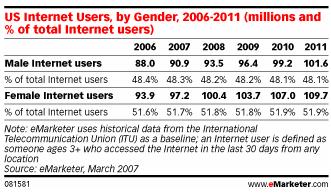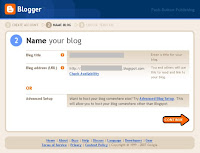A
search engine is an
information retrieval system designed to help find information stored on a
computer, such as on the
World Wide Web, inside a corporate or proprietary network, or in a
pc. The search engine allows one to ask for content meeting specific criteria (typically those containing a given word) and retrieves a list of items that match those criteria. This list is often sorted with respect to some measure of relevance of the results. Search engines use regularly updated indexes to operate quickly and efficiently.
Google
Around 2001, the Google search engine rose to prominence. Its success was based in part on the concept of link popularity and PageRank. The number of other websites and webpages that link to a given page is taken into consideration with PageRank, on the premise that good or desirable pages are linked to more than others. The PageRank of linking pages and the number of links on these pages contribute to the PageRank of the linked page. This makes it possible for Google to order its results by how many websites link to each found page. Google's minimalist user interface is very popular with users, and has since spawned a number of imitators.
Google and most other web engines utilize not only PageRank but more than 150 criteria to determine relevancy. The algorithm "remembers" where it has been and indexes the number of cross-links and relates these into groupings. PageRank is based on citation analysis that was developed in the 1950s by Eugene Garfield at the University of Pennsylvania. Google's founders cite Garfield's work in their original paper. In this way virtual communities of webpages are found. Teoma's search technology uses a communities approach in its ranking algorithm. NEC Research Institute has worked on similar technology. Web link analysis was first developed by Jon Kleinberg and his team while working on the CLEVER project at IBM's Almaden Research Center. Google is currently the most popular search engine.
Yahoo! Search
The two founders of Yahoo!, David Filo and Jerry Yang, Ph.D. candidates in Electrical Engineering at Stanford University, started their guide in a campus trailer in February 1994 as a way to keep track of their personal interests on the Internet. Before long they were spending more time on their home-brewed lists of favourite links than on their doctoral dissertations. Eventually, Jerry and David's lists became too long and unwieldy, and they broke them out into categories. When the categories became too full, they developed subcategories ... and the core concept behind Yahoo! was born. In 2002, Yahoo! acquired Inktomi and in 2003, Yahoo! acquired Overture, which owned AlltheWeb and AltaVista. Despite owning its own search engine, Yahoo! initially kept using Google to provide its users with search results on its main website Yahoo.com. However, in 2004, Yahoo! launched its own search engine based on the combined technologies of its acquisitions and providing a service that gave pre-eminence to the Web search engine over the directory.















